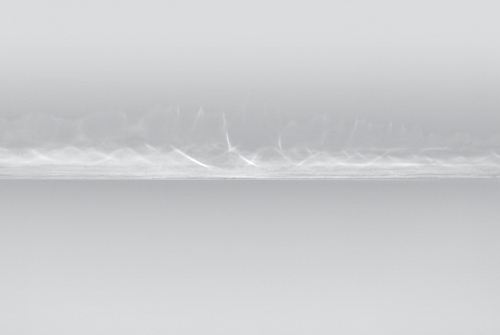Along with last night's
theater announcements, the
Colorado Springs Fine Arts Center also unveiled some of its upcoming visual arts programming, which includes an exhibition this summer with
James Turrell.
Turrell is a big deal. He's one of the top American artists working today, creating installations with light and color. One of the pieces he's best known for is an
installation in the
Roden Crater in Arizona.
According to museum director
Blake Milteer, the FAC will show one large Turrell installation, "Trace Elements," on loan from the
Denver Art Museum. "Trace" is the only significant Turrell work in the state, Milteer says, and the last time it was on display was the opening of the DAM's
Hamilton Building in 2006.
The FAC will build a room for the installation in the main gallery on the top floor. Milteer says they may add another Turrell work or two as they work directly with Turrell's studio on "Trace," but he's not sure just yet. As for what "Trace" will look like, Milteer says that Turrell doesn't want to give too much away ahead of time, preferring that people experience the work with open minds. He will say that the work begins with a path through an intense darkness leading into a room filled with light "of a cooler hue."

- Richard Nicol
- "Spread (2003)."
In a separate but related exhibit, local artist
Scott Johnson will show his works, which also deal with space and perception, says Milteer. Johnson (whom I had the pleasure of
interviewing a few years back) will begin to plan his exhibit as soon as the FAC takes down
Terry Maker: Reckoning so he can customize it to the gallery.
These two artists relate because they deal with "perceptually based work," Milteer says. That is, they seek to make perception a tangible experience. Johnson, who in the past has worked with two-way mirrors and objects like grasses for his "
infinity boxes," works with a "more physically activated experience" says Milteer. Turrell keeps to a minimalistic approach.
Take Turrell's manipulation of space, as seen in "Alta (pink)" below. Not only does he play with the space of the installation itself, but the creation of it as an object.
"Afrum I (White), 1967," a similar
piece in the permanent collection of the
Solomon R. Guggenheim Museum in New York City, is a classic in American art. Like "Alta," it creates the illusion of weight and three-dimensionality with a kind of contradicting sense of visual weightlessness.
According the FAC literature, Turrell retrospectives are planned starting in 2013 for the
Los Angeles County Museum of Art, the Guggenheim and the the
Museum of Fine Art in Houston. This summer, Turrell will show in the
Venice Biennale and in Russia, the latter for the first time. His art lies in the permanent collections of the
Tate Modern in London, LACMA and the
de Young Museum in San Francisco, to name a few. As for awards, Turrell was granted the esteemed
MacArthur Foundation "genius" grant in 1984, among others.
Of Turrell's work, Milteer says, "It's an experience that unfolds over time." He adds that although one can say this for any piece of art, it's crucial for Turrell, as it's the basis of his oeuvre. Take his work at Roden Crater, which changes as the light and the seasons shift. Or an indoor Turrell, which changes as one's eyes adjust.
Milteer thinks that Colorado Springs audiences are perfect for Turrell. And they'll never have seen anything like it at the FAC.










